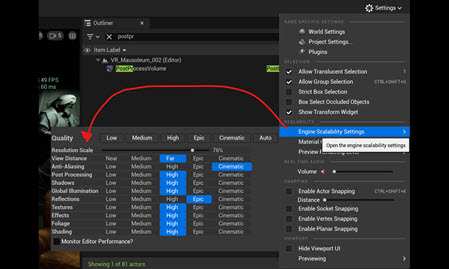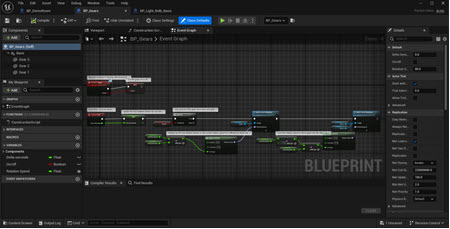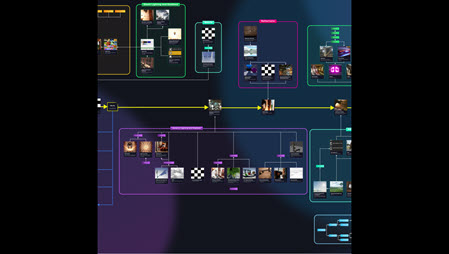Unreal Engine 5 (UE5) introduces several significant improvements and features that set it apart from Unreal Engine 4 (UE4). Here's a detailed comparison of the key differences:
Graphics and Rendering

Unreal Engine 5 (UE5), Graphics and Rendering, image via: unrealengine.com
Nanite (UE5):
•Introduces virtualized micropolygon geometry, allowing for incredibly detailed models without performance loss. This means developers can use high-poly models directly without needing to create multiple LODs (Levels of Detail).
•Dynamic resolution scaling for geometry based on distance and hardware capabilities.
Lumen (UE5):
•Brings fully dynamic global illumination, providing real-time lighting calculations. This results in more realistic lighting, reflections, and shadows that change as the scene does, without the need for light baking.
Virtual Shadow Maps (UE5):
•Enhances shadow quality, especially in large scenes, with less performance impact by using a virtual camera approach for shadow rendering.
Physics and Simulation

Unreal Engine 5 (UE5), Physics and Simulation, image via: unrealengine.com
Chaos Physics (UE5):
•Improved physics simulation with better cloth simulation, fluid simulation, and destruction. Integration with Niagara for particle effects enhances visual realism.
Content Creation and Workflow

Unreal Engine 5 (UE5), Content Creation and Workflow, image via: unrealengine.com
MetaHuman Creator (UE5):
•A tool for creating highly realistic human characters with detailed facial features and animations, greatly simplifying the process of character creation.
World Partition (UE5):
•Improves how levels are streamed, allowing for larger, more seamless game worlds. It divides the world into manageable chunks that can be edited independently and stream efficiently at runtime.
Material System (UE5):
•Enhanced capabilities with new nodes for visual scripting of materials, offering more realistic effects like subsurface scattering without external shaders.
MetaSounds (UE5):
•A new sound design system for creating interactive audio directly within the engine, offering more dynamic and responsive soundscapes.
Performance and Scalability

Unreal Engine 5 (UE5), Performance and Scalability, image via: unrealengine.com
Scalability (UE5):
•UE5 is designed for better performance scaling across different hardware, from high-end PCs to mobile devices. This includes features like Nanite and Lumen which automatically adjust quality based on hardware capabilities.
Development Tools and Features

Unreal Engine 5 (UE5), Development Tools and Features, image via: unrealengine.com
Blueprints and Scripting:
•While both engines support Blueprints for visual scripting, UE5 has refined and expanded this system for more complex gameplay mechanics and interactions without needing C++.
Niagara (UE5):
•An improved particle system with better GPU utilization, real-time editing, and tighter integration with physics (Chaos).
Ease of Content Creation
•UE5 significantly reduces the complexity of creating high-quality content:
•Artists can work directly with high-resolution models in Nanite without needing to worry about optimization until later stages.
•Real-time lighting with Lumen means less time spent on light baking and more time on actual content creation.
Cross-Platform Development

Unreal Engine 5 (UE5), Cross-Platform Development, image via: unrealengine.com
•Both engines support cross-platform development, but UE5 enhances this with better tools and runtime for targeting a wider range of devices, including cloud gaming platforms.
Licensing and Cost
Licensing Model:
•Both engines follow similar licensing with Unreal Engine being free to use until your game makes a certain amount of revenue, after which a royalty is due. However, specifics might change with updates.
Community and Support
•UE5 has the advantage of newer support and community resources, though UE4 still has a vast community and resource base due to its longer existence.
Conclusion
Unreal Engine 5 builds upon the foundation of UE4 by introducing new technology like Nanite, Lumen, and Chaos Physics, which aim to simplify the development process while pushing the boundaries of visual fidelity and simulation realism. These advancements not only enhance game development but also broaden the engine's use in other industries like film, architecture, and automotive visualization. For projects where these new features are crucial, UE5 offers significant advantages, but for many existing UE4 projects, the transition might depend on specific needs and the willingness to adopt new workflows.
